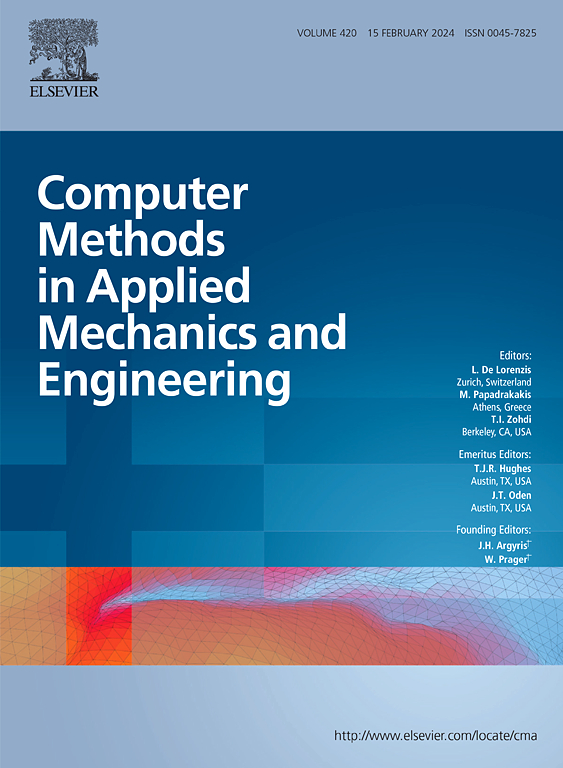A semi-implicit exactly fully well-balanced relaxation scheme for the Shallow Water Linearized Moment Equations
IF 6.9
1区 工程技术
Q1 ENGINEERING, MULTIDISCIPLINARY
Computer Methods in Applied Mechanics and Engineering
Pub Date : 2025-01-30
DOI:10.1016/j.cma.2025.117788
引用次数: 0
Abstract
When dealing with shallow water simulations, the velocity profile is often assumed to be constant along the vertical axis. However, since in many applications this is not the case, modeling errors can be significant. Hence, in this work, we deal with the Shallow Water Linearized Moment Equations (SWLME), in which the velocity is no longer constant in the vertical direction, where a polynomial expansion around the mean value is considered. The linearized version implies neglecting the non-linear terms of the basis coefficients in the higher order equations. As a result, the model is always hyperbolic and the stationary solutions can be more easily computed. Then, our objective is to propose an efficient, accurate and robust numerical scheme for the SWLME model, specially adapted for low Froude number situations. Hence, we describe a semi-implicit second order exactly fully well-balanced method. More specifically, a splitting is performed to separate acoustic and material phenomena. The acoustic waves are treated in an implicit manner to gain in efficiency when dealing with subsonic flow regimes, whereas the second order of accuracy is achieved thanks to a polynomial reconstruction and Strang-splitting method. We also exploit a reconstruction operator to achieve the fully well-balanced character of the method. Extensive numerical tests demonstrate the well-balanced properties and large speed-up compared to traditional methods.
求助全文
约1分钟内获得全文
求助全文
来源期刊
CiteScore
12.70
自引率
15.30%
发文量
719
审稿时长
44 days
期刊介绍:
Computer Methods in Applied Mechanics and Engineering stands as a cornerstone in the realm of computational science and engineering. With a history spanning over five decades, the journal has been a key platform for disseminating papers on advanced mathematical modeling and numerical solutions. Interdisciplinary in nature, these contributions encompass mechanics, mathematics, computer science, and various scientific disciplines. The journal welcomes a broad range of computational methods addressing the simulation, analysis, and design of complex physical problems, making it a vital resource for researchers in the field.

 求助内容:
求助内容: 应助结果提醒方式:
应助结果提醒方式:


